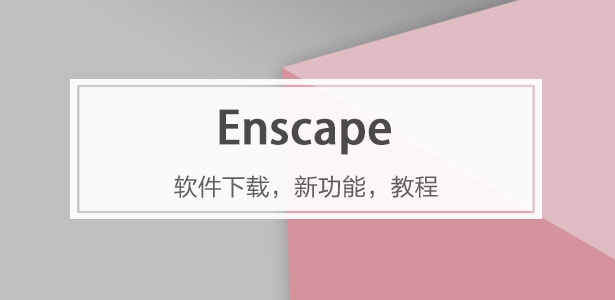
下載app免費(fèi)領(lǐng)取會員



設(shè)計(jì)單位? 米凹工作室
項(xiàng)目地點(diǎn)? 江蘇蘇州
建成時(shí)間? 2024年10月
建筑面積? 383平方米
本文文字由設(shè)計(jì)單位提供。
項(xiàng)目位于陽澄湖東側(cè)昆山的夕露園里,從這里既能看到公園景觀、陽澄湖的宜人風(fēng)光,又能遠(yuǎn)眺城市風(fēng)景。同時(shí),作為公園游覽線路的一部分,項(xiàng)目也承擔(dān)了公共建筑的功能。
Located in Xilu Garden on the eastern shore of Yangcheng Lake (Kunshan), the observation tower project offers a dynamic visual experience, framing both the park's curated landscapes and the scenic beauty of Yangcheng Lake, while also offering sweeping views of the surrounding urban backdrop. As an integral component of the park's circulation system, it serves as a multifunctional piece of public architecture.


瞭望塔的底層設(shè)置全天開放的公共衛(wèi)生間,供游人使用。與衛(wèi)生間方形門洞同側(cè)的長臺階提示游覽路線,沿著它拾級而上便來到建筑二層。
The tower’s winding staircase reveals the pathway for the tour, while a public restroom located on the main level is open all day for visitor convenience.


從二層開始,無論是這里的展廳,還是三層咖啡店、四層茶室空間,都由作為建筑局部的窗通過形態(tài)變化貫穿起來,對應(yīng)不同功能與風(fēng)景之間的聯(lián)系。由門洞步入展廳,眼前同樣為方形的窗戶展開一幅像嵌印在畫框中的水面圖景。方形門洞對應(yīng)來時(shí)路徑,方形窗戶則對應(yīng)前眺的風(fēng)景。雖然陽澄湖上是廣闊水面,但透過展廳的方形窗戶僅能見到較為含蓄的一小部分。更為重要的是,這扇窗完成了建筑空間室內(nèi)與室外場域的交互。
The exhibition hall (Second floor), the café (Third floor), and the tea room (Fourth floor) all share a conceptual link through the window's shifting designs, reshaping to match each room's function and landscape. Entering the exhibition hall, the windows frames a picture of water. The design language of the door corresponds to the path of entering, while window corresponds to landscape. Although being a vast lake, only a small part can be seen in a more subtle way in the exhibition hall, and what’s more, the design of window completes the interaction between indoor and outdoor fields.



瞭望塔既是公園內(nèi)公共活動場地交通路線的一端盡頭,也是游覽行程的中點(diǎn),圍繞園內(nèi)觀賞水塘布置的棧橋和湖畔步道在此交匯。通常,人們會從棧橋走到瞭望塔處,再沿湖畔步道回到公園大門。當(dāng)這座塔被賦予公共空間的功能之后,這里不再只是提示游人折返的標(biāo)記點(diǎn),而成為容納日常活動的停留地。
The observation tower is at the end of the transportation route as to the garden and also it is the midpoint of the tour, where the trestle bridge and lakeside trail meet. Usually, people would walk from the trestle bridge to the observation tower and then follow the lakeside trail back to the garden gate. Since the observation tower is given the function of a public building, it is not only a marking point to turn back, but also a resting place.


隨著建筑體固定角度的分層轉(zhuǎn)動,來到三層時(shí)透過窗戶見到整個(gè)公園景觀,水面被刻意隱藏。這一層空間功能設(shè)定為咖啡店,L形窗戶以整排長條形態(tài)呈現(xiàn),將豐富內(nèi)容的公園景觀及遠(yuǎn)眺可見的城市風(fēng)貌納入觀賞動作中,并配置可作為“咖啡桌”使用的窗臺。在這里,每個(gè)人都可以有獨(dú)享風(fēng)景的座位。
Walking up to the third floor (café), the entire garden view is just there while the water surface is deliberately hidden. The window is L-shaped long row that the beautiful garden and cityscape can be seen from close and afar. Windowsill serves as café table, each seat offers a phenomenal view.


如果說“水天一色”之前是停留在紙面上的詞匯,那么來到四層時(shí)它便成為真實(shí)感受。雙面落地窗戶設(shè)計(jì)讓整片陽澄湖風(fēng)光顯現(xiàn)出來,高大的樹木只剩下樹冠若隱若現(xiàn),人就像身處茂密植被的頂端,體驗(yàn)空中、水上的開闊和自由感覺。空間在功能上劃分為茶室和觀景區(qū),多樣化選擇滿足不同需求。
If “The water melting into the sky" is a written description, it becomes a very real feeling when you come to the fourth floor. The design of double-sided French window reveals the whole scenery of Yangcheng Lake. With only the crowns of tall trees looming as if you are at the top of the dense forest, experiencing openness and freedom from the air and water. The space is diversified into a tea room and a viewing area to meet different needs.


在建筑頂部的屋面空間同樣進(jìn)行了觀景設(shè)置,專門搭建的欄板將視野中水面以下內(nèi)容全部屏蔽,留下純粹的水面和岸線,另外,西向的地理方位使這里成為難得的落日觀賞點(diǎn)。隨著在瞭望塔中不斷登高,對應(yīng)建筑形體逐層轉(zhuǎn)動,人們在不同樓層都接收到獨(dú)有的功能與風(fēng)景相結(jié)合的體驗(yàn)。
The rooftop is specially set up for viewing while balustrades are carefully considered to block the content below the water surface that leaves a pure view. In addition, the westward geographic orientation of the building makes it a perfect view for sunset. Ascending by the observation tower, while the architectural form rotates by floor, it brings unique experience of function and scenery on different horizon.


由步梯通行于塔中之外,另一種游覽路徑的選擇是搭乘設(shè)置在建筑東側(cè)的觀光電梯。通過將連接電梯與建筑之間的空間進(jìn)行變化——二層的空間變成“小院子”,兩米高墻體四面圍合形成室內(nèi)感,同時(shí)上部留空營造出室外感受;四層采用全室內(nèi)的處理方式,亦不同于三層常規(guī)的連接橋設(shè)計(jì)——乘坐電梯的動作被賦予探索的小樂趣,當(dāng)門打開時(shí)進(jìn)入到不同形態(tài)空間的驚喜瞬時(shí)生成。
Besides stairs, it is also available to take the observation elevator on east side of the building. By the changing of lift lobby on each floor: a "small courtyard"(Second floor), two-meter-high walls enclosing the space to creates indoor sense, while the upper part outdoor. On the other side, the fourth floor is fully indoor, unlike the conventional bridge design on the third floor, that the elevator tour gives a little pleasure of exploration and instantaneous surprise of entering a different space.


整個(gè)建筑采用雙層立面設(shè)計(jì),內(nèi)層為鋁板幕墻,保證建筑整體良好的氣密性和保溫及防水性能,外層為生態(tài)木格柵,與內(nèi)層間保持一定空隙,提升立面使用的耐久性。以鋼結(jié)構(gòu)作為支撐主體,并與混凝土樓板進(jìn)行組合,維持建筑體分層轉(zhuǎn)動固定角度的外形,同時(shí)在每一層選擇性地暴露一部分結(jié)構(gòu)體,讓它成為空間的組成元素之一。無論是二層展廳里見到的立柱,還是咖啡店與家具合為一體的圓柱,或四層落地窗邊的桁架,都體現(xiàn)了結(jié)構(gòu)的修飾性表達(dá)。這部分結(jié)構(gòu)形態(tài)輔助并呼應(yīng)空間的功能設(shè)定,構(gòu)造包含力量感、延展性、穩(wěn)定感等在內(nèi)的新的空間氛圍。當(dāng)看見它,人們的理解并不是結(jié)構(gòu)的支撐作用,而是它傳遞的空間感受。
The elevation design of the whole building is double-layered. The inner part consists of aluminum curtain wall to ensure well airtightness, thermal insulation, and waterproof performance for the overall structure. The outer part adopts ecological wooden grilles not only to maintain a certain gap between the inner parts but also to enhance the durability of the facade. Steel combined with concrete floor slabs as the main supportive structure, maintaining the building’s fixed-angle rotating shape. Additionally, a portion of the structure parts (the columns-Second floor, the cylindrical pillars integrating with furniture-Third floor, the trusses by the windows-Fourth floor) are all selected to be exposure to become part of the spatial composition which exemplify the decorative structure. These structural forms the space function and what’s more important, it delivers the atmosphere of strength, expansiveness, and stability.
▲ 瞭望塔施工過程? ?米凹工作室


從原址上留存的構(gòu)筑物改建為一座公共建筑,夕露園瞭望塔具備了多樣的日常使用功能。黃昏時(shí)分,身處水光天色間,透過窗戶看見晚霞與湖面交疊而成的流動畫面,或駐足窗前,或緩行于塔中,人們在光影與風(fēng)景的縫隙中完成屬于自己的游覽回環(huán)。
The observation tower was renovated from its original remaining structure. In the rising light of dusk, the visitors will be nestled between the shimmering waters and crimson sky, embarking on a journey of interweaving light, glistening shadows, and a stunning landscape enchanted by the evening glow.



設(shè)計(jì)圖紙 ▽








完整項(xiàng)目信息
項(xiàng)目名稱:夕露園瞭望塔
項(xiàng)目類型:建筑、改造、公共空間
項(xiàng)目地點(diǎn):江蘇省昆山市
設(shè)計(jì)單位:米凹工作室
事務(wù)所網(wǎng)站:www.ateliermearc.com
主創(chuàng)建筑師:周維
設(shè)計(jì)團(tuán)隊(duì):葉葭煥、吳雪婷、張馮韜
設(shè)計(jì)時(shí)間:2024年4月—2024年6月
建設(shè)時(shí)間:2024年6月—2024年10月
建筑面積:383平方米
結(jié)構(gòu)設(shè)計(jì):上海源規(guī)建筑結(jié)構(gòu)設(shè)計(jì)事務(wù)所(普通合伙)
結(jié)構(gòu)設(shè)計(jì)團(tuán)隊(duì):張業(yè)巍、余威威
幕墻顧問:上海紐恰建筑設(shè)計(jì)咨詢有限公司
施工單位:蘇州金典銘筑建設(shè)工程有限公司
攝影師:梁山
視頻版權(quán):米凹工作室
版權(quán)聲明:本文由米凹工作室授權(quán)發(fā)布。歡迎轉(zhuǎn)發(fā),禁止以有方編輯版本轉(zhuǎn)載。
投稿郵箱:media@archiposition.com
本文版權(quán)歸腿腿教學(xué)網(wǎng)及原創(chuàng)作者所有,未經(jīng)授權(quán),謝絕轉(zhuǎn)載。

上一篇:BIM建筑|成都麓湖CPI Ⅱ期:KOKO Market / 幾里建筑
下一篇:政策新聞 | 貴州省開展2025年度二級建造師考試合格人員資格復(fù)核工作












推薦專題
- BIM建筑|微型庇護(hù)所:B131咖啡館 / 蔣杰設(shè)計(jì)事務(wù)所
- BIM建筑|3J融合創(chuàng)新空間 / 蔡田田建筑師事務(wù)所+一間建筑
- 建筑賞析|域DOMAIN/鏘設(shè)計(jì)
- 建筑賞析|溫江濕地驚現(xiàn)“水波紋”城堡!可躺平看山玩水的寶藏地標(biāo)來了
- BIM建筑|MAD歐洲首個(gè)建成文化項(xiàng)目:鹿特丹Fenix博物館
- BIM建筑|Anadu白阜莊園·松境?/ 八荒設(shè)計(jì)
- 建筑賞析|巴厘島這座竹房子,是從浪花里“長”出來的餐廳,連污水都能變成花園的“飲料”
- BIM建筑|夕露園瞭望塔 / 米凹工作室
- BIM建筑|成都麓湖CPI Ⅱ期:KOKO Market / 幾里建筑
- BIM建筑|n2大樓,倫敦黃金地段辦公樓 / Lynch Architects





























